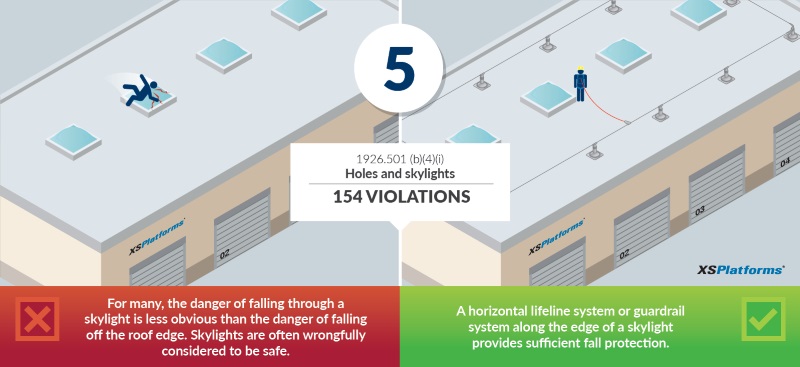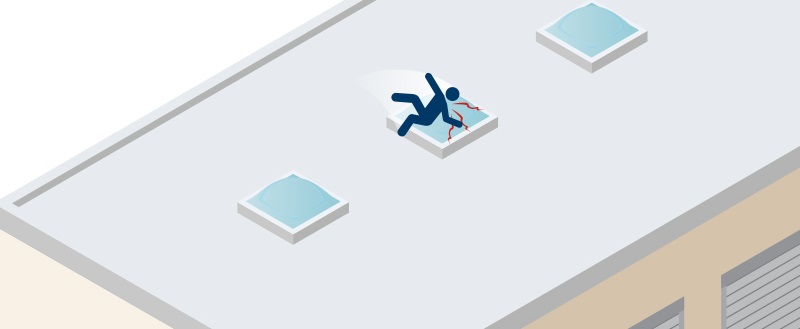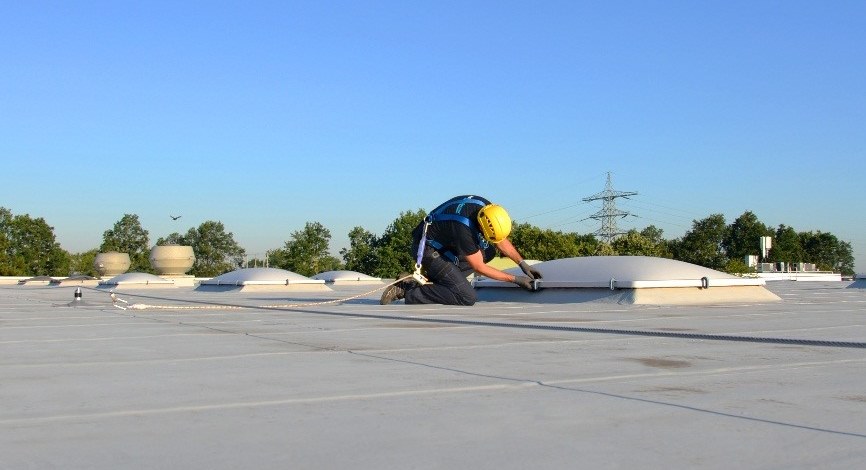
Just like each year, the Occupational Safety and Health Administration (OSHA) has published a top 10 of the most cited violations in the US. During the National Safety Council Congress & Expo, deputy director of OSHA, Patrick Kapust, presented the top 10 list of the fiscal year 2016.
During this year, a total of 35,019 citations were issued among the top 10 categories. A decrease of 7% in comparison with 2015. Of these violations, a total of 27,814 (79%!) were indicated as “serious”, which means that there is a substantial probability of death or serious physical harm and that the employer should have known or knew the hazard beforehand.
Fall Protection, the most cited category
For the 6th year in a row, Fall Protection is the most cited category of the fiscal year with a total of 6,906 violations (of which 5,635 serious). Just like last year, Hazard Communication comes in second with 5,665 violations. In contrast to fall protection, there is no change in the number of violations in comparison with 2015.
Completing the top 3 with 3,900 violations (a decrease of 17% compared to 2015) we find Scaffolding. Last year, this category came in third too and we published 5 articles about the violations within each section of the scaffolding standard (1926.451) and how accidents can be prevented.
Fall protection citations in numbers
As mentioned before, Fall Protection is leading the top 10 most-cited violations for 6 years in a row now. The table below shows the number of the top 10 cited violations combined for each fiscal year, the number of fall protection violations and the number of serious fall protection violations:

In general, a decreasing trend in the total number of violations cited by OSHA is visible. Without a doubt, the total number of violations including the ones OSHA didn’t observe will be higher, but these numbers provide a good indication of the (current) situation.
Approximately 1 in every 5 cited violations is related to the Fall Protection standard (1926.501), which is a high percentage when looking at the other categories. In comparison: Scaffolding violations (#3) account for 11% of the total number of violations. From 2011 onwards, the share of cited Fall Protection violations is increasing slowly. Of course multiple factors come into play in this statistic, such as the focus of OSHA in enforcing specific regulations and the amount of workers who are exposed to fall hazards.
On the other hand, the percentage of “serious” violations each year is decreasing. Although these numbers are still quite high, the continuous decrease is a positive trend. Educating employers in fall hazards, safety at height and the possibilities of fall protection is key here.
Regarding these numbers and the fact that 538 deaths occurred in 2015, caused by falling from 6 ft or higher , we can conclude that increasing knowledge and awareness concerning fall protection is still a major point of attention.
Most violated sections and what to do about it
Within the 1926.501 standard for fall protection, OSHA has listed a top 5 of the sections which are cited the most. In the upcoming weeks we will take a closer look at those violations, give examples of real life situation where those sections apply and, more importantly, what measures can be taken to prevent hazardous situations and comply to the specific standard.
We will start this 5-part series with the 5th most cited section in fall protection.
Holes and Skylights
Section 1926.501(b)(4)(i) encompasses regulations and standards for fall protection when working on a roof with holes and skylights. In fiscal year 2016, 154 violations regarding this section were cited by OSHA. In 2015, 151 citations were given within this section, which was the 5th most cited that year as well.

What does this section encompass?
This regulation states that each employee on walking/working surfaces shall be protected from falling through holes (including skylights) more than 6 ft above a lower level.
Putting this standard into practice
On flat roofs (generally those of factories and warehouses) skylights are often seen. Sometimes, roofs may even have holes for a specific reason. Roofs with holes or skylights entail falling hazards, although this isn’t always assessed as such: the danger of falling through a hole (just like the danger of falling off the edge of a roof) is far more obvious than falling through a skylight as we pointed out in an earlier blog.
The major problem here is that a presumed safe zone, created by a horizontal lifeline system along the edge of a roof or a guardrail system, isn’t a safe zone when skylights are present within it. This is because skylights are often considered safe when they are covered by a plastic dome or glass. But lawmakers regard skylights as holes and expect building owners to provide safety measures.
How to prevent hazardous situations?
Multiple measures can be taken to be able to work on and around holes and skylights, complying with this standard.
The first option is to place guardrails around or over (areas with) skylights. A simple solution, with one drawback: workers won’t be able to reach the skylight itself.
In case the skylights need to be periodically maintained for example, or even if a skylight needs to be removed to be able to run a cable of a crane through it, a suitable solution would be a horizontal lifeline system. This system allows workers to walk along the entire lifeline which is attached to their harness by a lanyard. When the lifeline system is placed in the vicinity of holes, skylights and roof edges, users are protected against multiple falling hazards.

Top 5 section violations infographic
We have created an infographic based on the 5 most cited sections within the Fall Protection standard. In this infographic we have visualized the top 5 violations and provide solutions and advice on how to create safe working conditions in these situations and comply to the OSHA standards.
Want to receive the infographic? Subscribe and we will send it to you directly!
